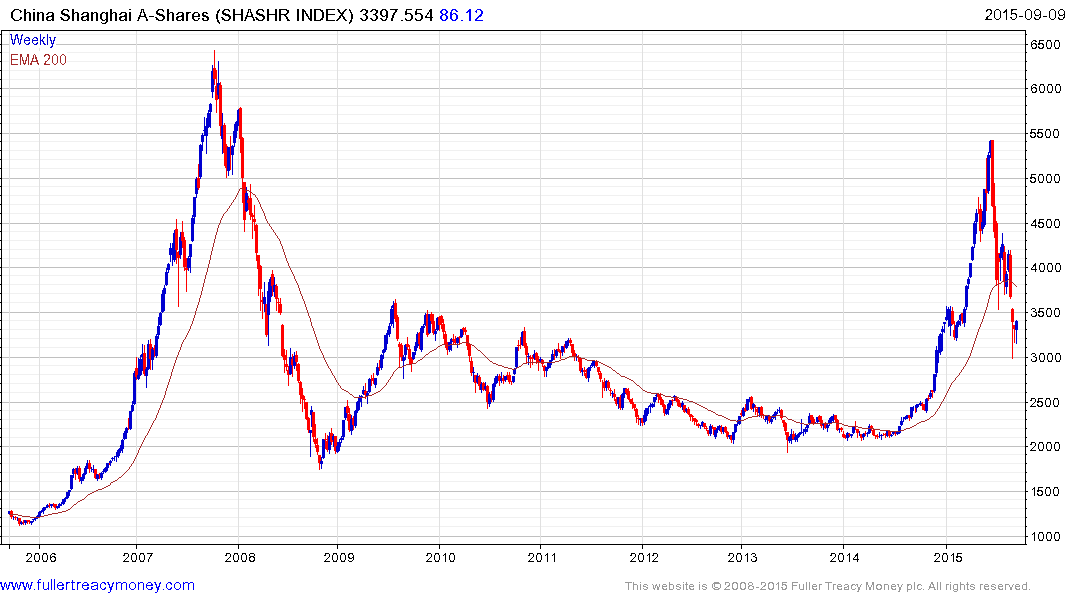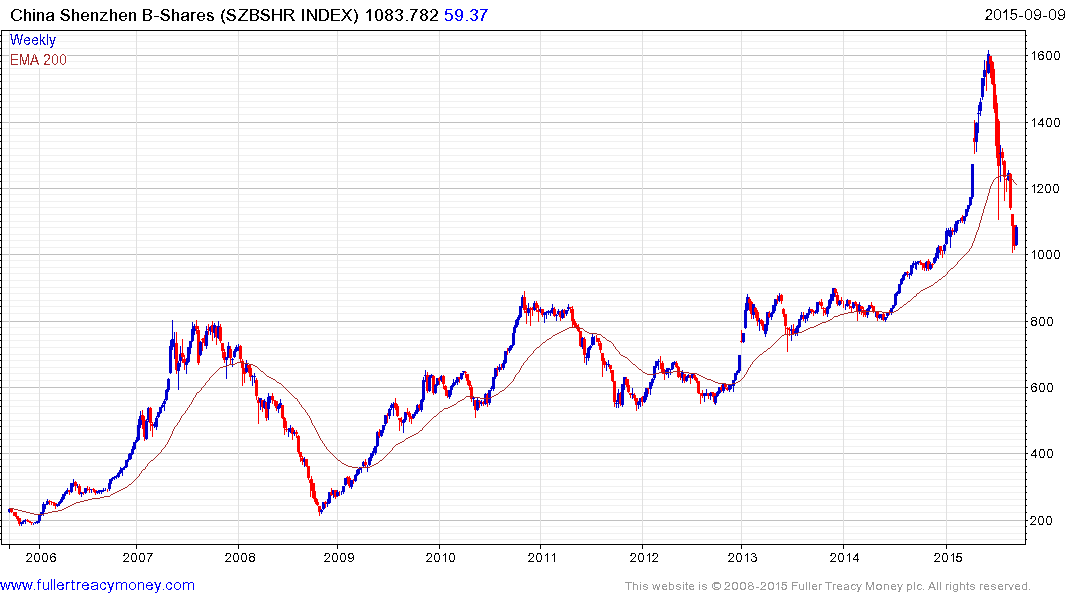China Just Killed the World's Biggest Stock-Index Futures Market
This article by Kyoungwha Kim for Bloomberg may be of interest to subscribers. Here is a section:
China, which has been investigating evidence of “malicious” short selling since July, stepped up curbs in the futures markets on Monday. The China Financial Futures Exchange now labels a position of more than 10 contracts on a single index future as “abnormal trading.” While the bourse said the restriction won’t apply to futures used for hedging purposes, it didn’t detail how it will identify such trades. Before last month, investors could have as many as 600 contracts.
The bourse also raised fees for settling positions opened on the same day to 0.23 percent from 0.0115 percent. Margin requirements on stock-index futures contracts were lifted to 40 percent from 30 percent. For those with hedging demand, the levels climbed to 20 percent from 10 percent. Exchange officials didn’t respond to e-mailed questions from Bloomberg News on Tuesday.
Futures trading on the CSI 300 Index, a gauge of the nation’s biggest companies, shrank to just 27,899 contracts on Wednesday. That’s down from 3.2 million at the end of June and compares with the 30-day average of 1.7 million. For the CSI 500 Index of small-cap shares, volumes have dropped to 11,820 from about 144,000 a month ago.
Banning short selling was a common practice during the financial crisis and there are still pretty strict rules on naked shorting in most of Europe and the USA. Removing leveraged traders with an interest in seeing prices falling further must appear a logical step for China’s decision makers. From an analytical perspective this removes a potent source of additional supply which is a positive for the market generally.

The Shanghai A-Share Index has found at least near–term support in the region of 3000 and continues to rebound. A period of support building is probably required so that investor confidence can be rebuilt enough to sustain a meaningful rally.

The Shenzhen B-Share Index, where a significant number of the newer consumer and healthcare shares are listed, has bounced from the 1000 level which is close to the upper side of the underlying medium-term range. It will need to hold that level to demonstrate more than temporary support.


